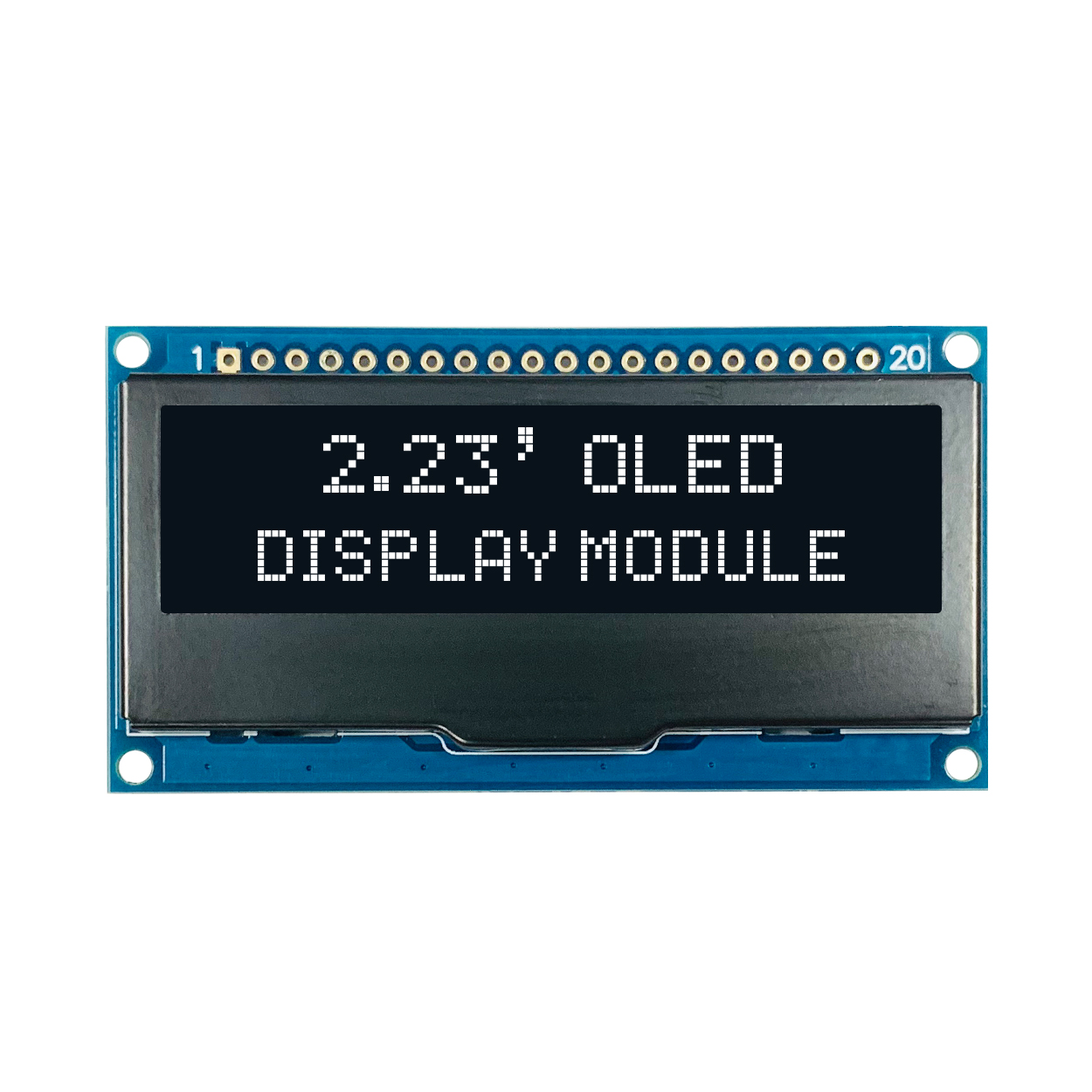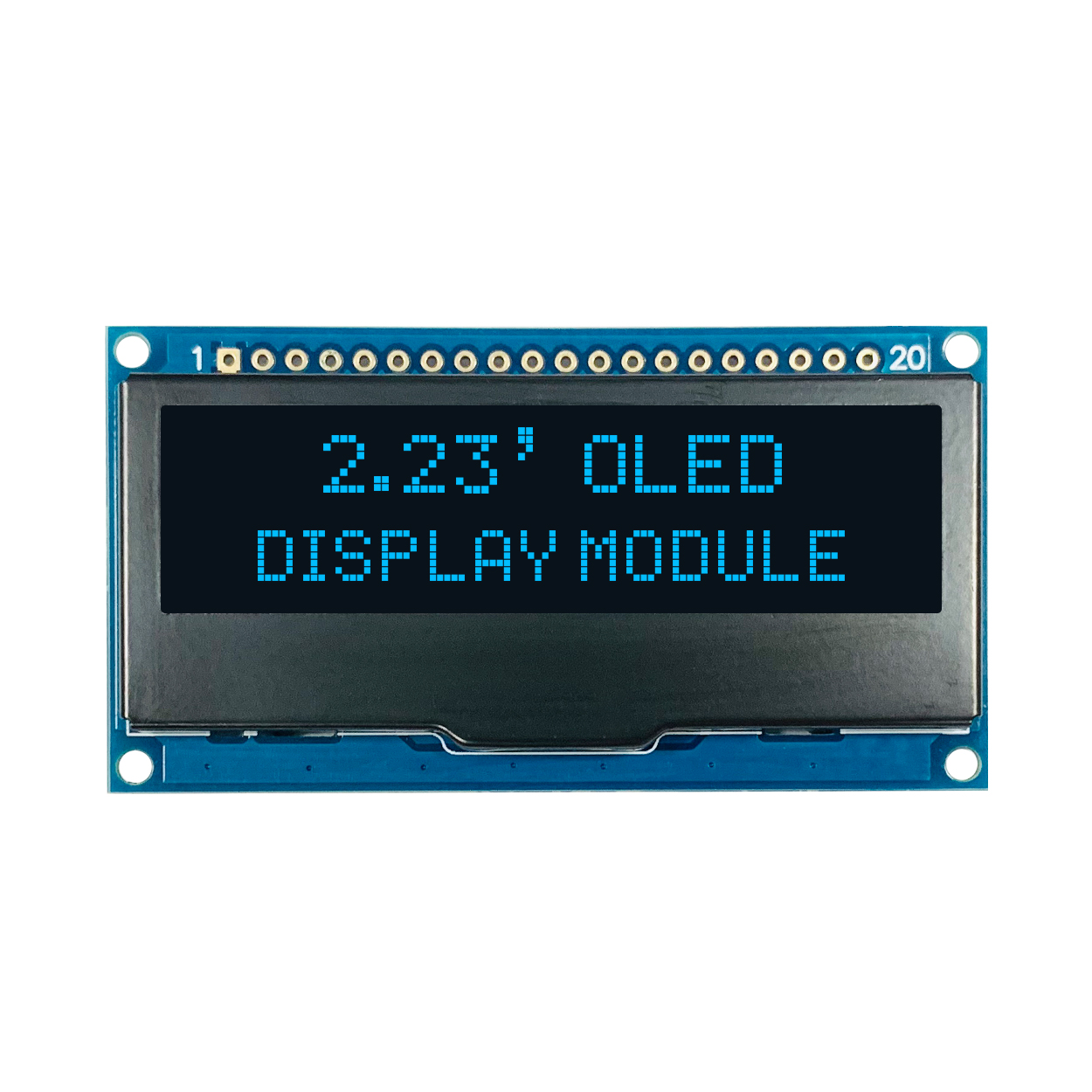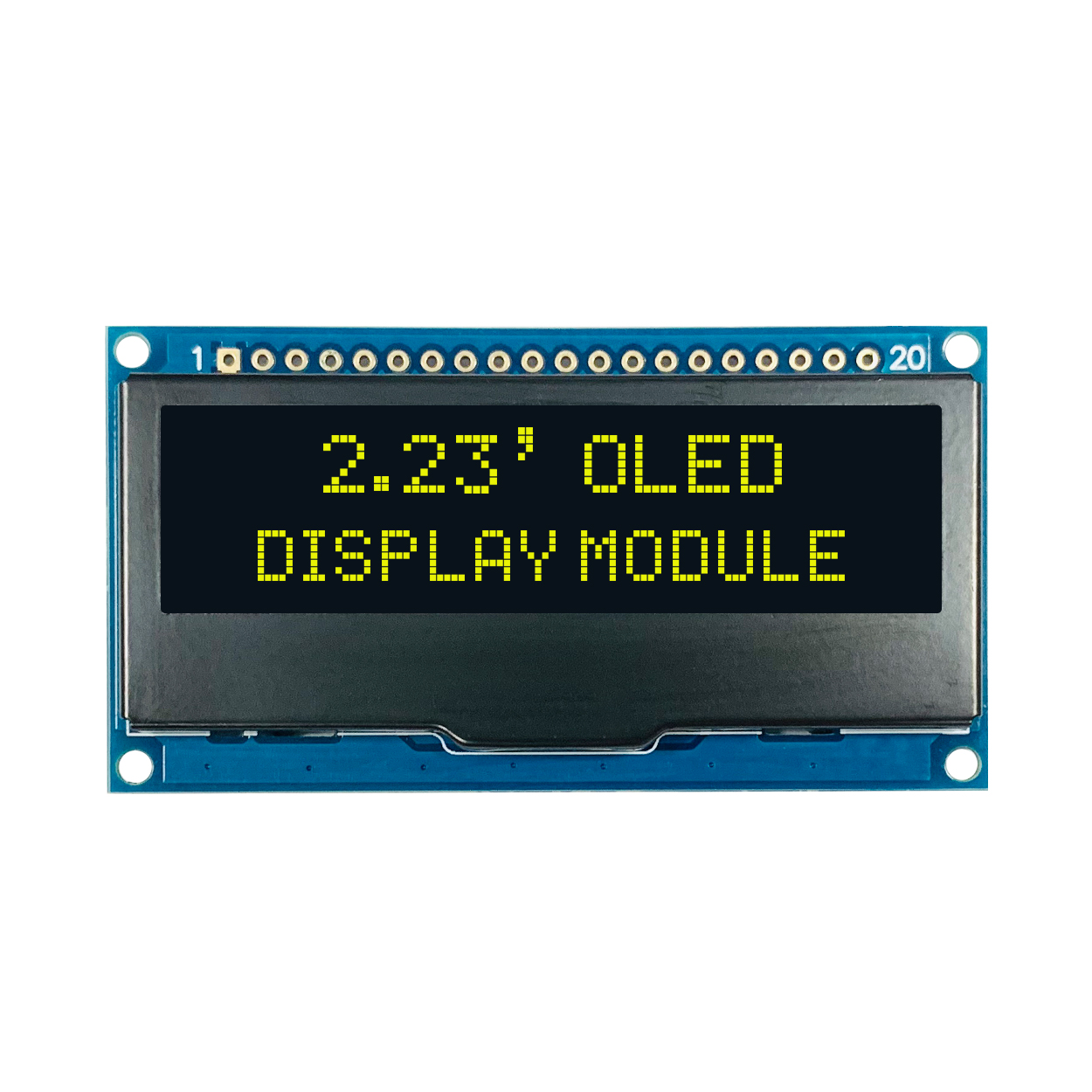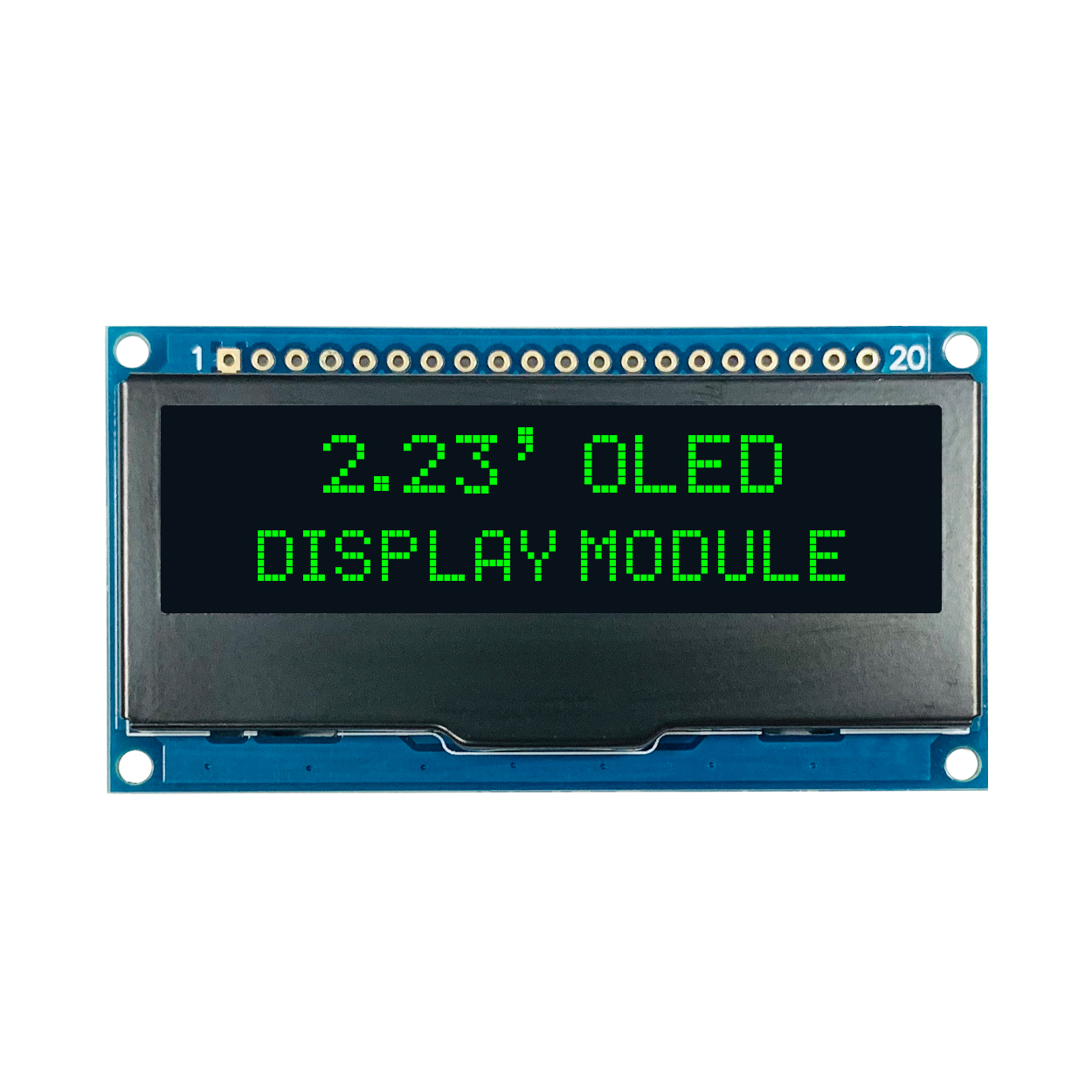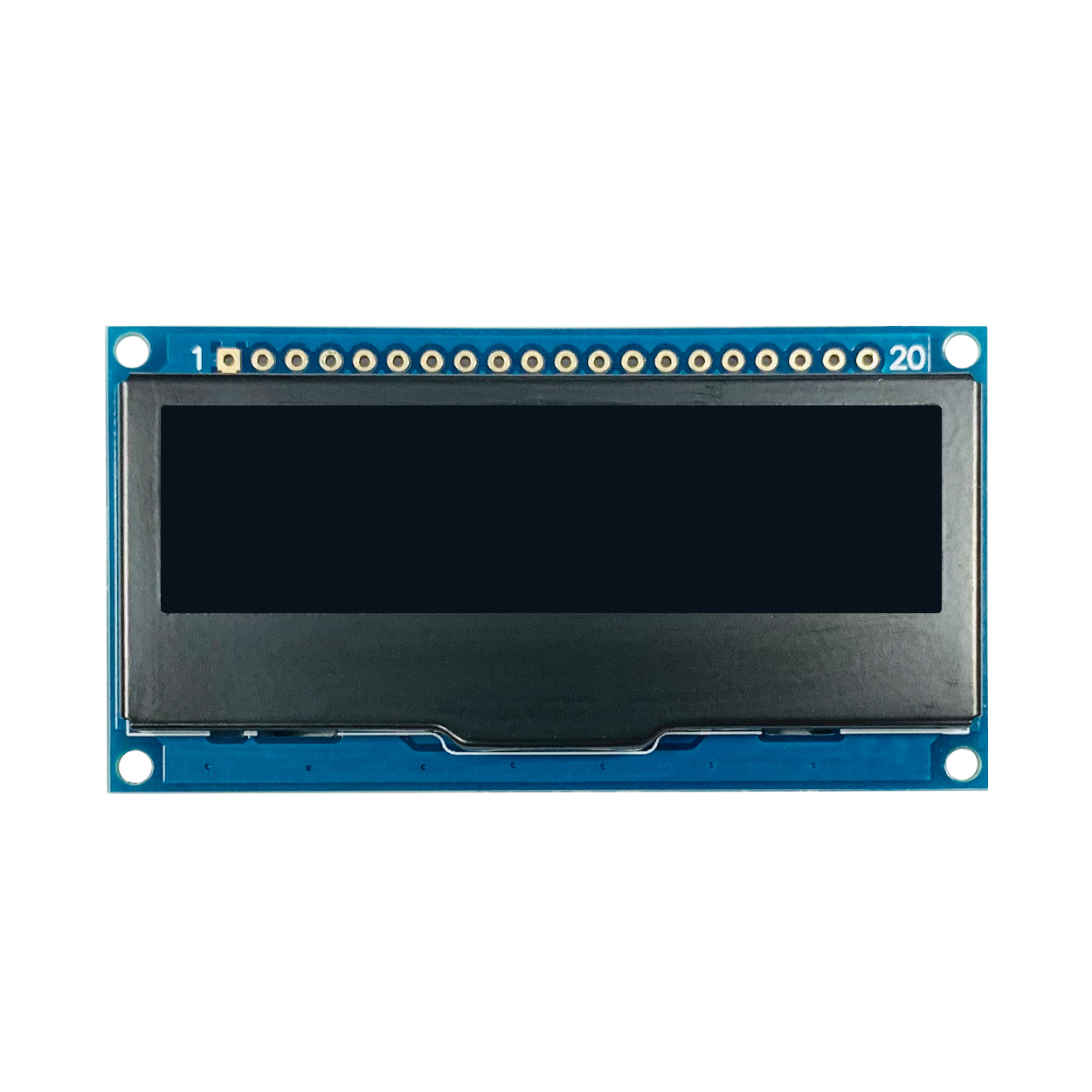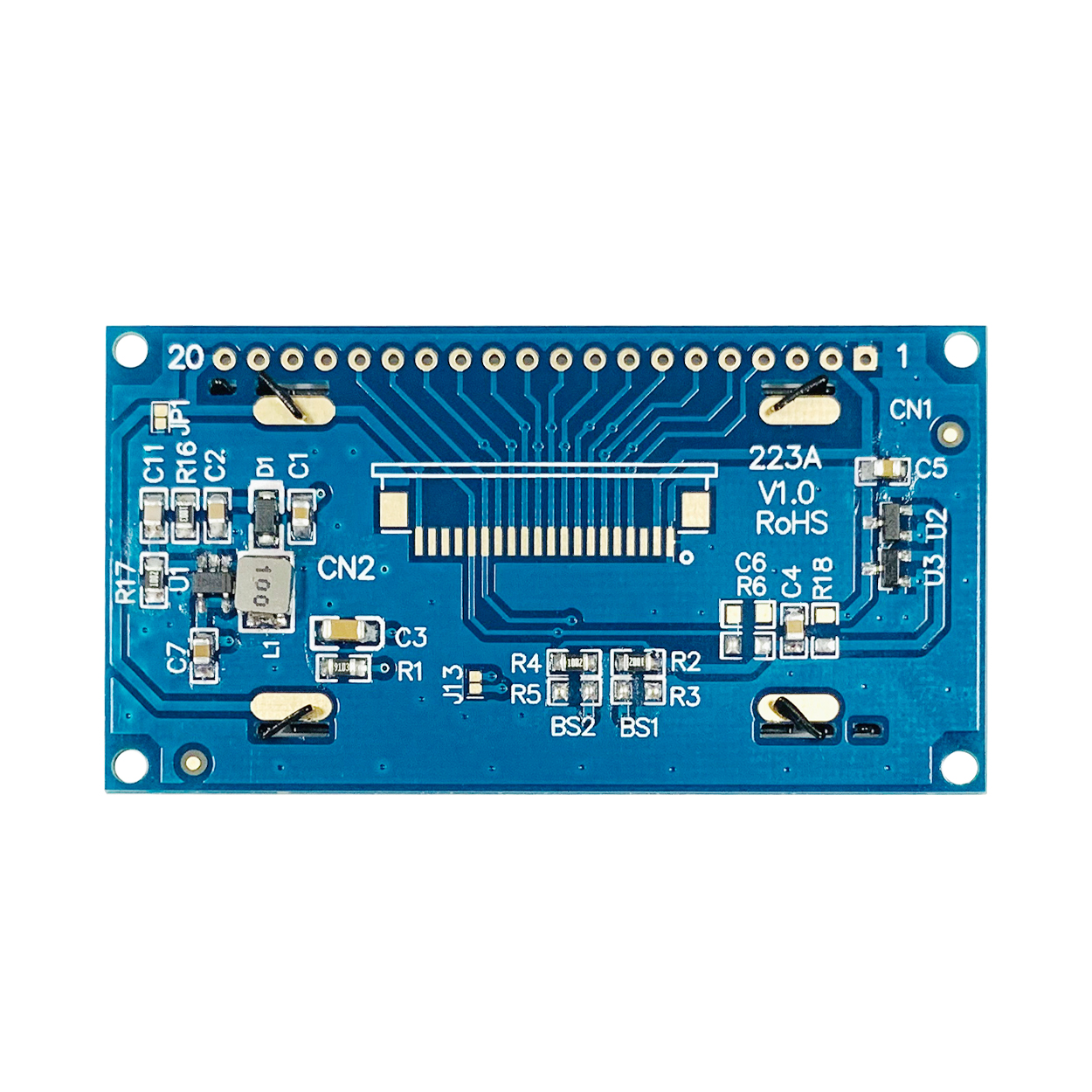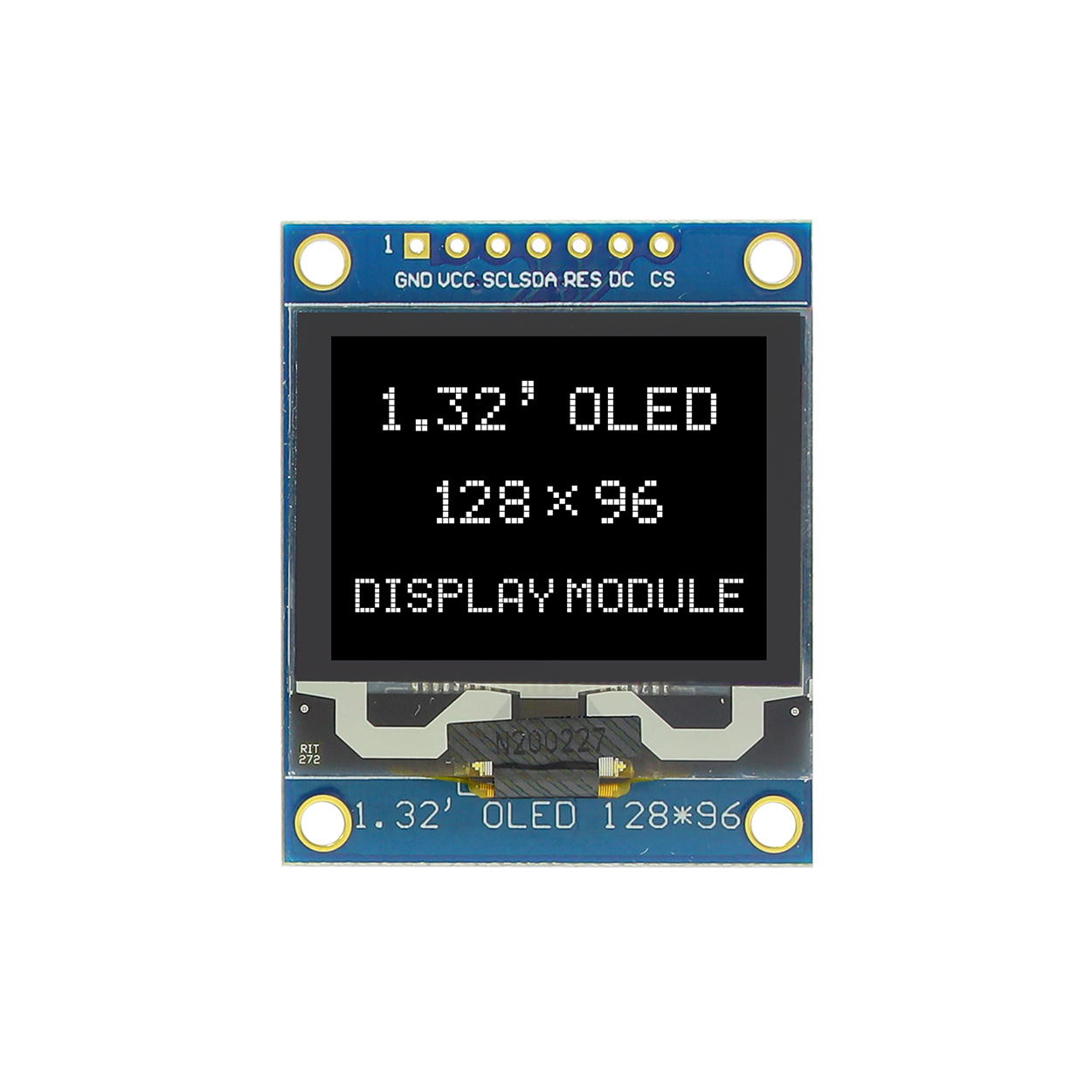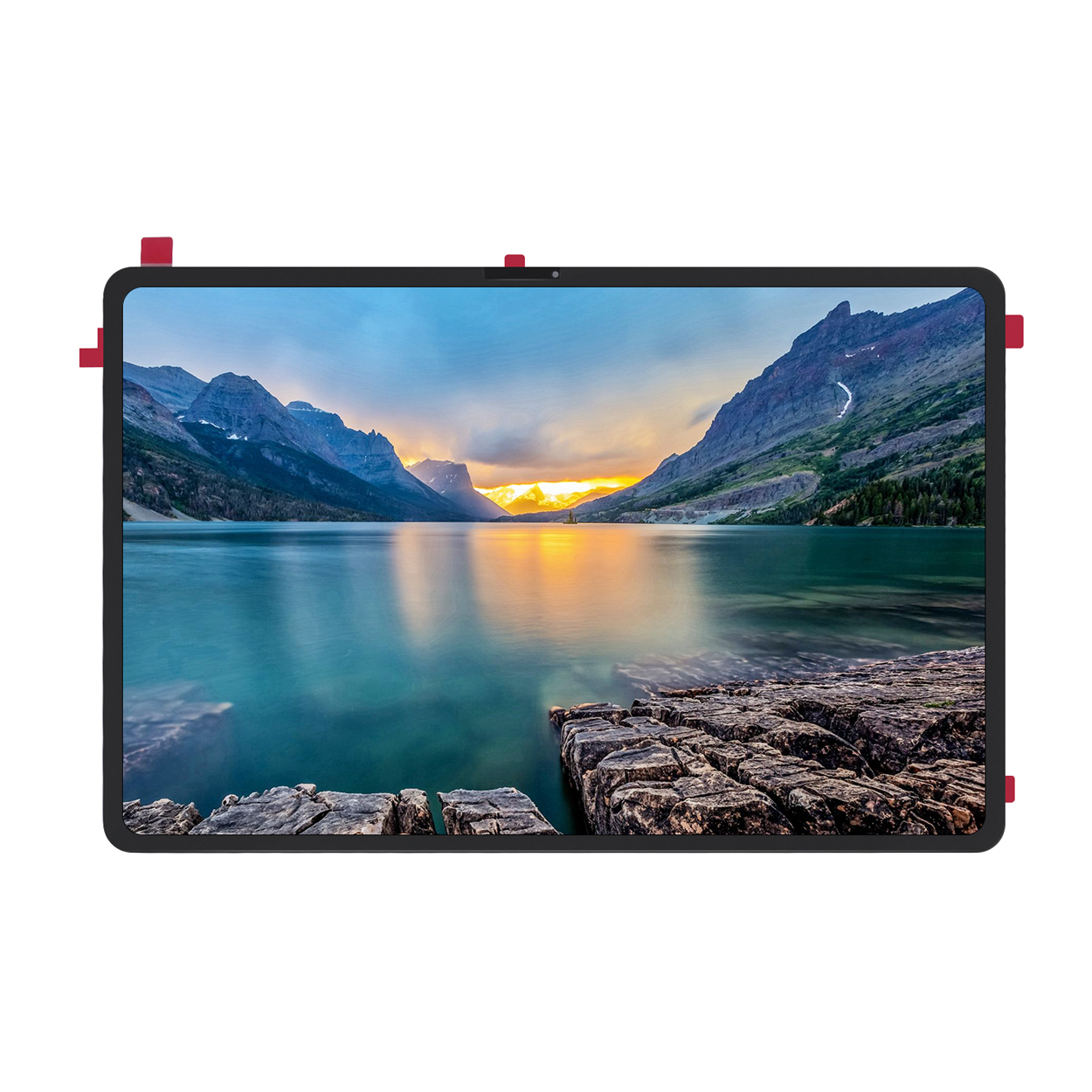
2.23″ OLED Display Module 128×32 White Graphic 20Pin SSD1305
Advanced Overview of the 2.23" OLED Display Module 128×32: A Technical Perspective
The 2.23-inch OLED Display Module, specifically the 128×32 white graphic version, offers a passive matrix display mode with a resolution of 128×32 pixels. Designed with flexibility in mind, it supports various monochrome color options, including white, blue, yellow, and green. This module utilizes the SSD1305/SSD1309 driver ICs and can interface via parallel, SPI, or I2C ports, offering versatility in integration with different systems. A compact design (66.5L × 35.0W × 8.8H mm) complements its efficient pixel layout, making it ideal for compact devices where space and power efficiency are essential. In this article, we will explore the technical attributes of this module, its key specifications, and its potential applications in modern technology.
Key Features of the 2.23" OLED Display Module
OLED display modules like the 2.23″ version are becoming increasingly prevalent due to their high-quality visuals, low power consumption, and compact form factor. The 128×32 resolution combined with monochrome color options makes it suitable for a range of low-power applications where clear, concise data display is critical. Below is an overview of the module’s key specifications:
| Característica | Especificación |
|---|---|
| Modo de visualización | Matriz pasiva |
| Número de píxeles | 128×32 |
| Color de la pantalla | Blanco, azul, amarillo, verde |
| IC del controlador | SSD1305 / SSD1309 |
| Ciclo de trabajo | 1/64 Deber |
| Interfaz | Parallel, SPI, I2C |
| Conteo de pines | 20 pines |
| Tamaño del módulo | 66.5L × 35.0W × 8.8H mm |
| Área de visualización | 57.0 × 15.1 mm |
| Área efectiva | 55.02 × 13.1 mm |
| Tamaño de píxel | 0.41 × 0.39 mm |
| Paso de píxeles | 0.43 × 0.41 mm |
Advantages of OLED Display Technology
OLED (Organic Light Emitting Diode) technology has gained widespread adoption due to its distinct advantages over traditional LCD and LED displays. One key benefit is the ability to achieve true black levels. Unlike LCD displays, where backlighting can lead to light leakage, each pixel in an OLED display emits its own light. This provides sharper contrasts, brighter colors, and more vivid images.
Moreover, OLED displays are thinner and lighter than their LCD counterparts. This contributes to a reduced overall footprint for devices, which is crucial for mobile and portable electronics. Furthermore, OLEDs are energy-efficient, especially when displaying dark or black content, as the pixels are turned off when displaying black.
Application Scenarios for the 2.23" OLED Display Module
The 2.23″ OLED display module is an excellent choice for applications where high resolution and minimal power consumption are required. The module’s compact size makes it perfect for devices such as portable medical instruments, handheld devices, smartwatches, IoT devices, and various consumer electronics. It can also be used in industrial equipment or embedded systems where limited space and high visibility are necessary.
Given the high clarity and brightness of OLED displays, the module is often used in scenarios requiring clear, real-time data visualization—such as in sensor readouts, status displays, or low-power graphical interfaces. Its versatility in color options (white, blue, yellow, and green) further enhances its adaptability to various use cases.
Interface Options and Compatibility
The 2.23″ OLED display module provides flexibility in terms of interfacing with different hardware platforms. With support for parallel, SPI, and I2C communication protocols, this module can be integrated into a broad range of microcontrollers and processing units. These communication interfaces offer different advantages, depending on the specific requirements of the application.
- Parallel Interface: Ideal for high-speed communication, especially in applications requiring faster data transfer rates.
- Interfaz SPI: Offers a good balance between speed and complexity, making it suitable for most embedded systems with moderate communication requirements.
- Interfaz I2C: A low-speed, two-wire interface that is perfect for simple systems where only occasional data updates are needed.
The versatility of these interfaces allows engineers and developers to select the most appropriate one based on the desired speed, power consumption, and system complexity.
Module Dimensions and Pixel Layout
The compact dimensions of this module—66.5L × 35.0W × 8.8H mm—allow it to fit into applications with strict size constraints. The display area itself measures 57.0 × 15.1 mm, with an effective pixel area of 55.02 × 13.1 mm. This arrangement ensures that the display provides sufficient space for readable data or graphics while maintaining an efficient use of available space.
Each pixel in the 128×32 grid is sized at 0.41 × 0.39 mm, with a pixel pitch of 0.43 × 0.41 mm, providing a balance between pixel density and overall module size. This configuration ensures that the display maintains a sharp and clear visual output, making it ideal for text, icons, and small graphical elements.
Conclusión
The 2.23″ OLED Display Module 128×32 with a monochrome white graphic display offers an excellent solution for space-conscious designs that require high-quality visual output. Its passive matrix mode, low power consumption, and flexible interfacing options make it an ideal candidate for a range of applications in both consumer electronics and industrial devices. The versatility of the display color options and the compact size ensure that it meets the needs of a variety of embedded systems.
As the demand for efficient, space-saving, and visually clear displays continues to grow, OLED technology will play an increasingly important role in shaping the future of electronic devices. This module serves as an excellent example of how compact, low-power displays can drive innovation across many industries.
Dibujo
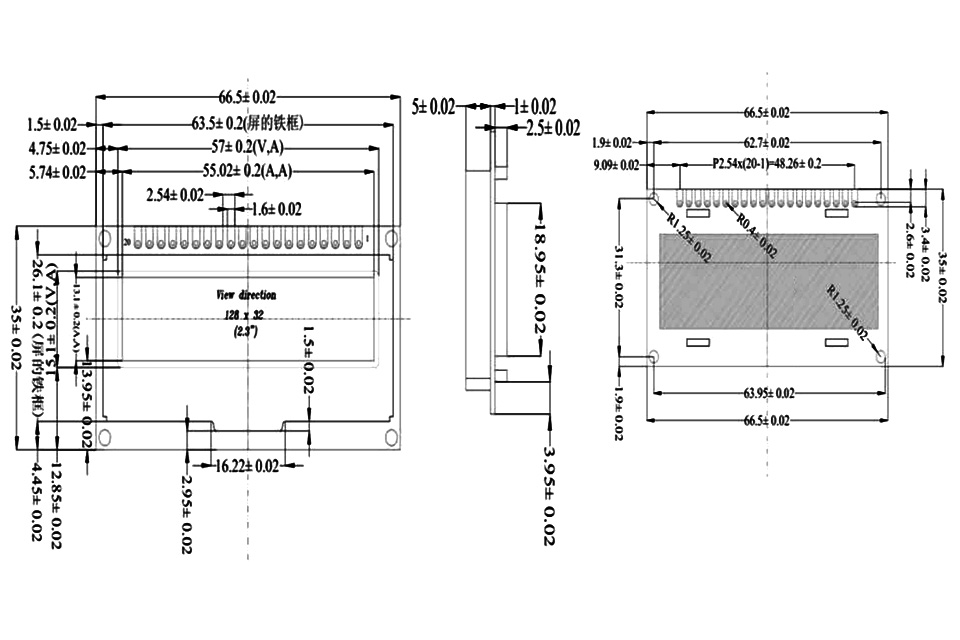
Descripción del pin
| ARTÍCULO | SÍMBOLO | NIVEL | FUNCIÓN |
|---|---|---|---|
| 1 | VSS | 0 | Toma de tierra eléctrica |
| 2 | VDD | 3~5V | Power Supply for Logic |
| 3 | V0 | Power supply for display module circuit | |
| 4 | /DC | Alto/bajo | Data / Command control |
| 5 | Escribiendo | Alto/bajo | H: Leer, L: Escribir |
| 6 | /RD | Alto, Alto-> Bajo | Habilitar señal |
| 7 | D0 | Alto/bajo | Bus de datos |
| 8-14 | D1-D7 | Alto/bajo | Bus de datos |
| 15 | /CS | Alto/bajo | Selección de chip |
| 16 | RES | Alto/bajo | Active LOW Reset signal (RC Reset circuit on board) |
| 17 | Licenciatura en Ciencias 1 | Alto/bajo | Communication protocol select |
| 18 | Licenciatura en Ciencias 2 | Alto/bajo | Communication protocol select |
| 19 | CAROLINA DEL NORTE | — | Float or connect to VSS |
| 20 | Por favor | — | Marco de tierra |
¿Por qué elegirnos?
Base de conocimientos
La tecnología evoluciona a un ritmo increíble y mantenerse a la vanguardia requiere un aprendizaje constante y una actitud abierta. Al ampliar continuamente nuestros conocimientos, nos aseguramos de seguir siendo líderes en nuestro campo.
¡Únase a nosotros mientras exploramos las últimas tendencias y conocimientos, y aproveche la oportunidad para refrescar y profundizar su comprensión de la tecnología LCD!
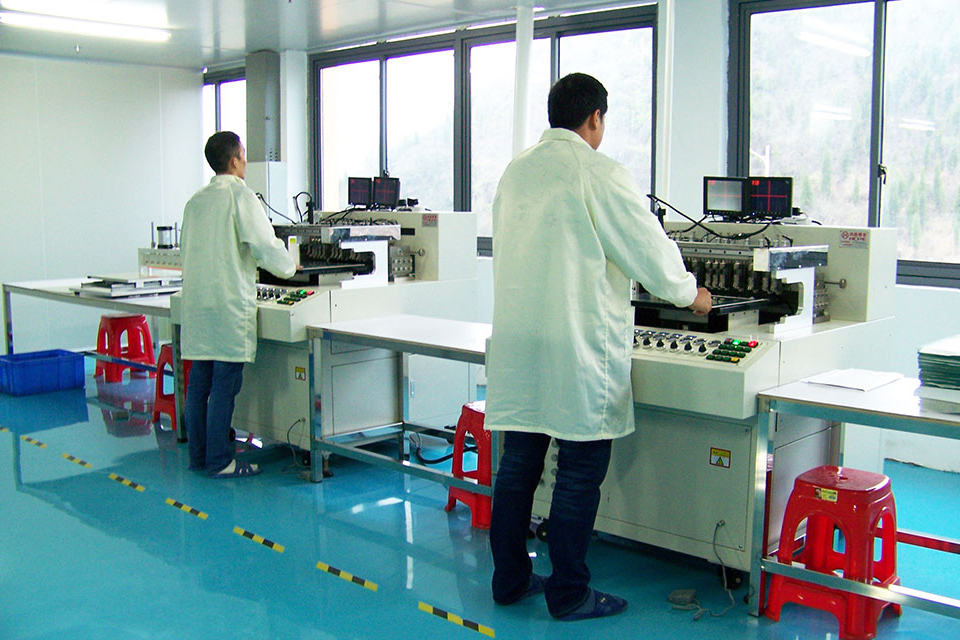
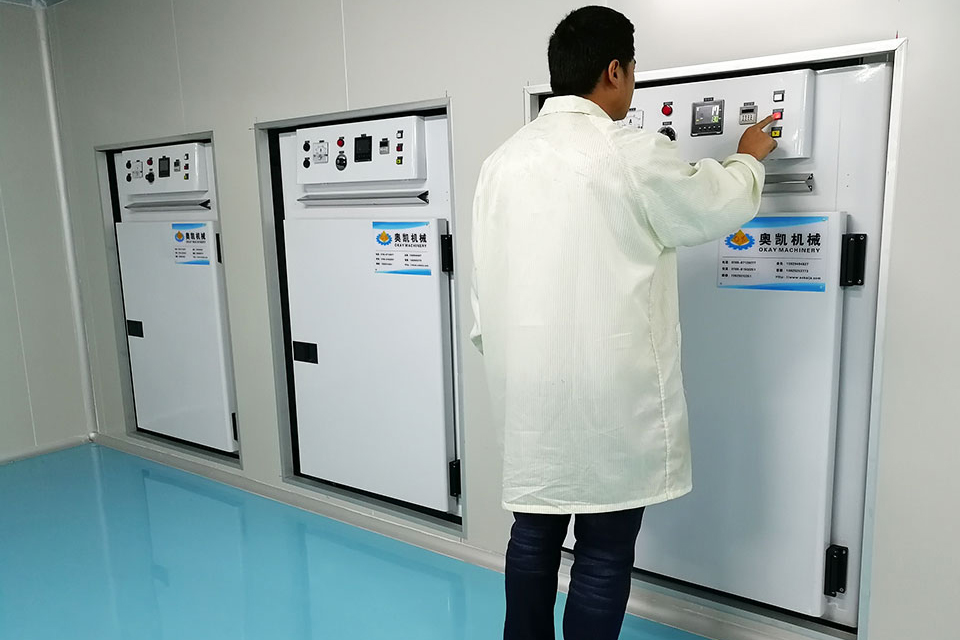
Nuestros valores fundamentales y misión
Nuestro objetivo es ser el proveedor líder de soluciones de LCD ofreciendo productos de alta calidad, un servicio al cliente excepcional y fomentando relaciones basadas en la confianza. Cuando trabajas con nosotros, no eres solo un cliente: te conviertes en parte de nuestra familia.
Sus necesidades son nuestra prioridad y estamos dedicados a garantizar su éxito en cada paso del viaje.
Nuestras ofertas de productos
Ya sea que se trate de nuestras ofertas estándar o de una solución personalizada, la calidad siempre es nuestra máxima prioridad. Optimizamos constantemente nuestros procesos para ofrecer la mejor combinación de precios competitivos y entregas oportunas. Nuestro objetivo es brindar un valor excepcional y, al mismo tiempo, satisfacer sus necesidades específicas.
¡Explore nuestra gama de productos hoy y vea cómo podemos ayudarlo con su próximo proyecto!
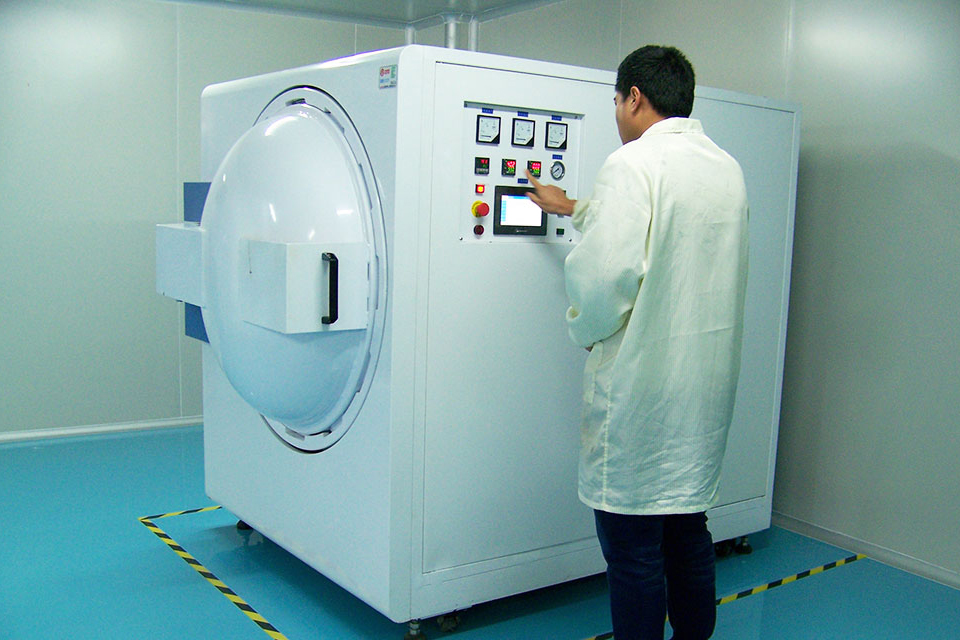
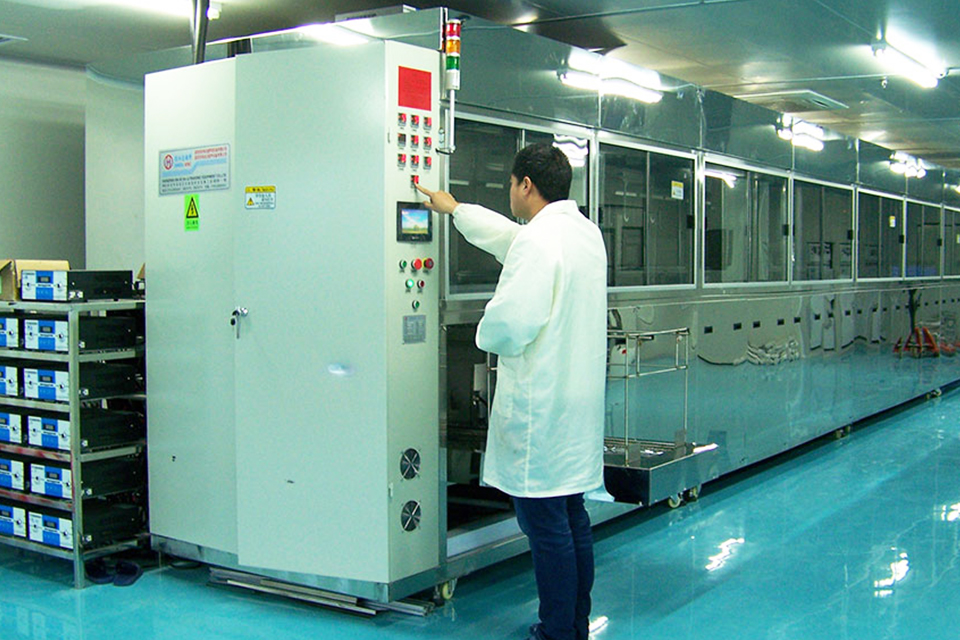
Soporte global al cliente
Somos un fabricante y proveedor de soluciones de LCD de servicio completo, especializado en una amplia gama de productos electrónicos. Nuestra experiencia incluye pantallas TFT a color, LCD integrados, paneles táctiles, calentadores de LCD, retroiluminación y LCD de caracteres y gráficos.
Brindamos soluciones integrales para satisfacer diversas necesidades de la industria. Acompáñenos mientras descubrimos las últimas tendencias y conocimientos.
Preguntas frecuentes
The resolution of the 2.23″ OLED Display Module is 128×32 pixels.
The display supports four monochrome color options: white, blue, yellow, and green.
The module uses the SSD1305 or SSD1309 driver ICs.
The module supports three communication interfaces: parallel, SPI, and I2C.
Each pixel in the display measures 0.41 × 0.39 mm.
The pixel pitch is 0.43 × 0.41 mm.
The display operates with a 1/64 duty cycle.
The overall module size is 66.5L × 35.0W × 8.8H mm.
This module is ideal for use in portable medical devices, smartwatches, handheld electronics, IoT devices, and industrial equipment.
OLED technology provides higher contrast, true black levels, lower power consumption, thinner design, and more vibrant colors compared to traditional LCD and LED displays.

